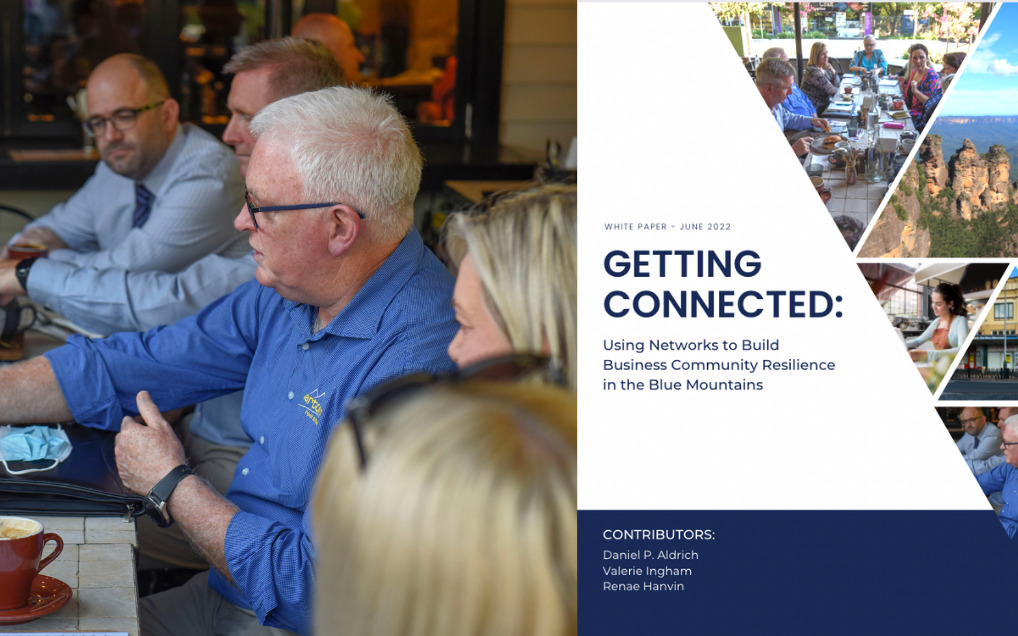When it comes to surviving disasters for businesses, good old-fashioned networking may be the key, according to a new White Paper commissioned by corporate2community.
‘Getting Connected: Using Networks to Build Business Community Resilience in the Blue Mountains’ looks at the specific role business community networks (a form of social capital) can play in the disaster space, and it turns out who you know could change how things play out for your business during a disaster.
Leading social capital expert, Professor Daniel Aldrich, joined forces with Associate Professor Valerie Ingham from Charles Sturt University, and Renae Hanvin from corporate2community to write the White Paper using the results of a 2021 Disaster Resilience Survey of local businesses and a review of recent literature relating to networks and crisis.
How social networks work for your business
In a recent blog we explained how connected communities, those with the right balance of all types of social capital, are more resilient and can better adapt to disasters.
“Social networks are an efficient way to alleviate shocks and accelerate recovery in communities – and our most important defence against disasters,” Professor Aldrich said.
“These types of social networks can form a conduit for important information, help us coordinate our collective activities, provide financial, administrative, and psychological support, and influence our everyday behaviours.”
“The Blue Mountains area is a perfect case study with its many villages and varying types and sizes of business communities,” Professor Aldrich said.
What this means for the Blue Mountains
The White Paper revealed that there is a place for focused programs in the Blue Mountains that foster connections among business owners and operators in order to build their business capacity to handle ongoing and future crisis events.
“We believe that developing a regional-based network to provide opportunities tied to disaster education and mentoring can meet this need. With funding from regional and national authorities, a number of NGOs and private sector organisations can help guide the creation of this network,” Professor Aldrich said.
“For the Blue Mountains, these findings are especially worrying considering the high overall failure rates of businesses affected by disasters,” Associate Professor Valerie Ingham said.
“Many businesses continue to operate in relative isolation – this is not an ideal situation, given the recent disasters of the Black Summer bushfires of 2019/20, followed by severe flooding in some locations and then the COVID-19 pandemic.”
What Blue Mountains businesses told us
Respondents to the 2021 Disaster Resilience Survey said they would be interested in developing a new, more open network of businesses, but would need administrative help given time and resource constraints.
The 2021 Disaster Resilience Survey also revealed:
- Business owners already recognised the power of networks and connections in building resilience, but many lacked broad and diverse networks
- Many businesses did not fully embrace or understand the value in networking, especially in terms of building disaster preparedness.
Project background
This White Paper was delivered as part of the Blue Mountains Business Community Resilience Project, a free two-year program focused on building preparedness, resilience and wellbeing.
Funded by the Bushire Recovery and Resilience Fund (BCRRF) the project is a collaboration between C2C and regional Blue Mountains business network BusinessBM. Visit www.businessbm.com.au or register here for updates on other projects currently being delivered by C2C.


Recent Comments